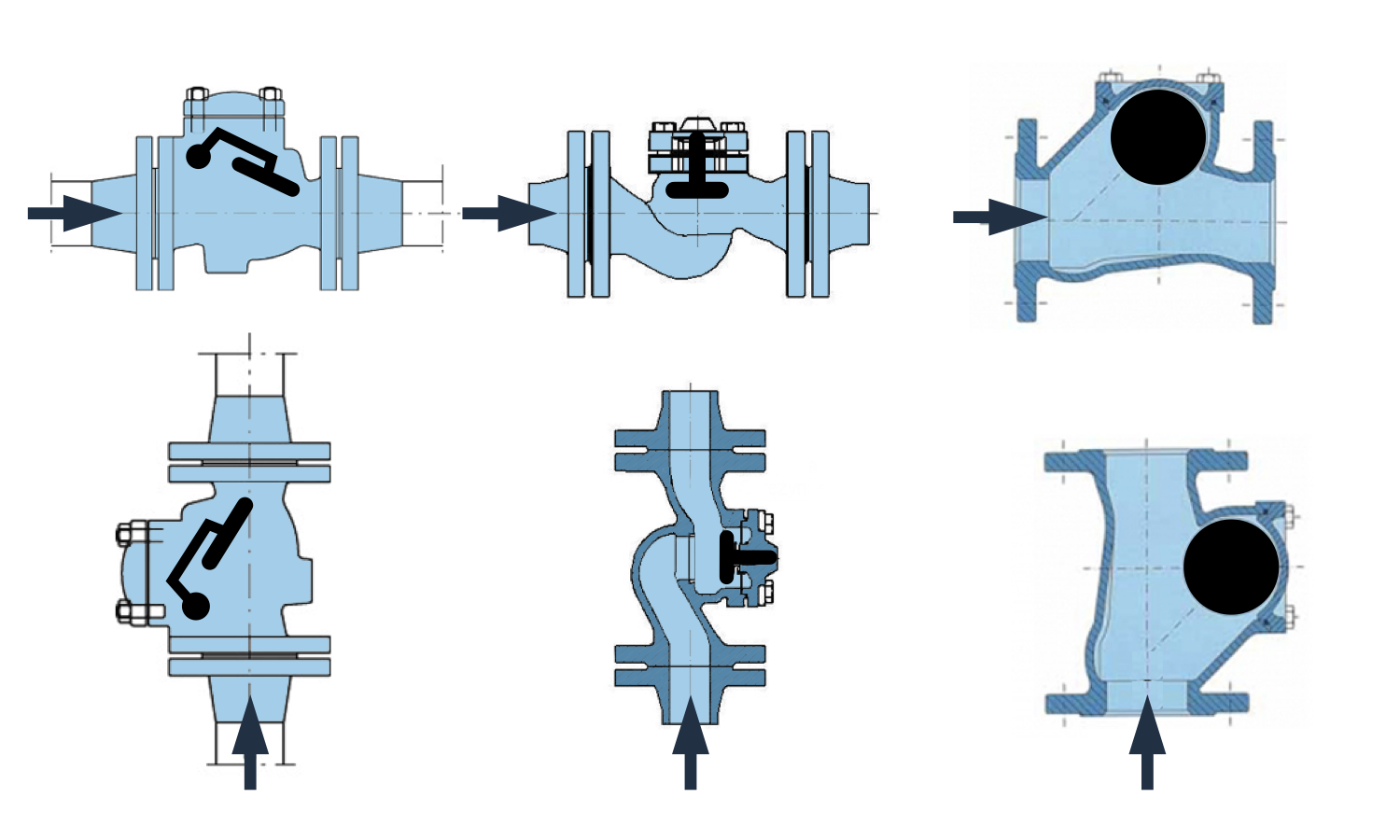Please do not block ads on our site. Clicks on ads help us exist, grow and become more useful for you!
Installation of the check valve
Spring-disc and lift check valves can be installed in any position with any flow direction.
Non-spring check valves should be installed on a horizontal pipeline or on a vertical one with the flow direction from bottom to top. When installing a ball check valve on a horizontal pipeline, the ball chamber must be above the pipeline axis.
Check valves, whose disc is held closed by a lever mechanism, may only be installed on a horizontal pipeline.
The body of the check valve must not be subjected to torsion, tension, bending, or compression from connected pipelines.
The corresponding flanges must be parallel. It is not allowed to correct flange misalignment by installing additional gaskets or uneven tightening of bolt connections.
When installing a check valve on long straight sections of the pipeline exposed to temperature fluctuations of the working medium or ambient air, a fixed support or axial compensator with guides should be installed to prevent pipeline displacement relative to its axis.
Before installing the check valve, remove the plugs that block the passage. In some valves, an additional insert is provided to hold the disc in place during transportation, which must be removed before installation.
Do not damage the paint coating of the valve body, as it serves not only a decorative purpose but also protects the check valve body from corrosion.
The arrow on the body must match the correct flow direction according to the process diagram.
The connecting bolts should be installed so that the nuts are located on the side of the check valve flange. The bolts should be tightened diagonally, in a cross pattern.
It is not allowed to lift the valve by the holes in the connecting flanges.
Installing a mesh filter before the check valve increases its service life.
question : comment : feedback
220
 Catalog of
Catalog of сheck valves
Zetkama
Zetkama
Genebre
ГОСТ
Danfoss
CMO
CMO
CMO
Honeywell - Resideo
Ukspar
Hawle
Brandoni
Brandoni
Brandoni
IVR
ARI Armaturen
FAF
Oventrop
Polix
Polix
Polix
AVK
AVK








 EN 1092-1
EN 1092-1
